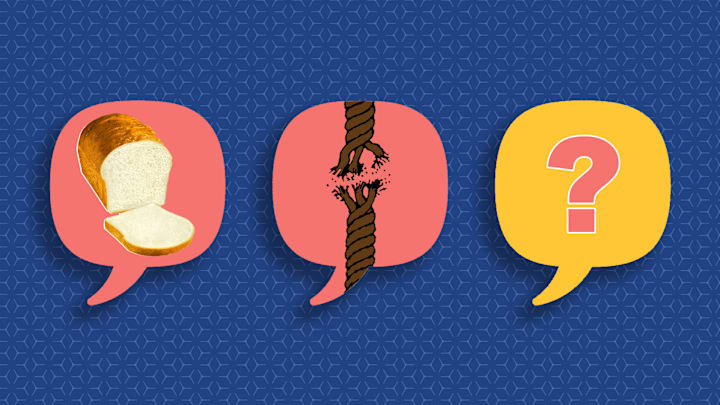Through thick and thin might not be included in traditional marriage vows, but it sends the same message as expressions that are: “for better, for worse; for richer, for poorer; in sickness and in health.” They all basically mean “through the good and the bad” or just “in any circumstances.”
You might assume that thick here is good—thick walls, thick wallets, thick scarves, thick stews. You’re safe and warm, fat and happy. Thin, by contrast, evokes lean times: threadbare apparel, watery broth, and a shack that practically death-rattles at every stiff breeze.
And sure, the beauty of such a vague cliché is that you can beef it up with whatever visuals you want. But through thick and thin originally meant something pretty specific.
- The Original Meaning of Through Thick and Thin
- Through Thick and Thin to Chaucer, Spenser, and More
- The Figurative Thick and Thin
The Original Meaning of Through Thick and Thin
According to the Oxford English Dictionary, usage of through thick and thin was “apparently originally with reference to ‘thicket and thin wood.’” Some sources have taken this to mean that the original phrase was through thicket and thin wood, which people eventually simplified to through thick and thin.
This doesn’t seem to be the case. Nobody, not even the OED, cites any direct reference to through thicket and thin wood. If people used that phrase with enough regularity to engender a shortened version, we have yet to find evidence of it in the written record.

More likely, the OED just means that through thick and thin itself originally involved traversing dense and sparse terrain. Traipsing through a thicket, with its tangle of crowded foliage, is much tougher than strolling through a thin wood with ample space between its trees. So thick refers to difficult circumstances, while thin implies easy going.
In early usage, though, the expression wasn’t a metaphor.
You Might Also Like ...
- The Whole Nine Yards of What?
- What’s the Scratch in Made From Scratch?
- The Phrase Close, But No Cigar Once Involved Cigars
Through Thick and Thin to Chaucer, Spenser, and More
The Oxford English Dictionary’s oldest reference to through thick and thin comes from “The Reeve’s Tale” of Geoffrey Chaucer’s Canterbury Tales. In it, a thieving miller thwarts two students’ attempt to prevent his treachery by untying their horse.
“And whan the hors was laus, he gynneth gon
Toward the fen, ther wilde mares renne,
And forth with ‘wehee,’ thurgh thikke and thurgh thenne.”
Paraphrased in modern English, the loosed horse heads toward the fen, where wild mares run, and goes forth with a gleeful neigh “through thick and through thin.” (While the students are busy chasing the horse, the miller steals some of the flour he ground from their grain and tells his wife to make a cake.) A fen is a marsh, so picture the horse slogging through reed-covered sludge and galloping across more solid ground.
There’s another great example in Amoryus and Cleopes, John Metham’s mid-15th-century English take on Greek mythology’s star-crossed lovers Pyramus and Thisbe (later an influence on Shakespeare). One night, Amoryus and Cleopes—whose families don’t approve of their love—hear each other on either side of a very tall, very thick wall separating their families’ land. Cleopes tells Amoryus to find the hole in the wall, and “forth thru thyk and thyn” he leaps, letting no “nettyl busche ner thorn” stop him from reaching it.
Edmund Spenser used through thick and thin in Book III of his epic poem The Faerie Queene, published in 1590. Knights Arthur and Guyon have just watched a fair-haired lady (later identified as Florimell) crash through “the thickest brush” on a white steed. She’s terrified, clearly fleeing some evil, and soon the knights learn what: a forester “breathing out beastly lust” as he chases her on a weary horse.
“His tyreling [j]ade he fiersly forth did push,
Through thicke and thin,
both ouer banck and bush
In hope her to attaine by hooke or crooke … ”

All three references to through thick and thin evoke a rushed, chaotic journey toward some highly coveted pursuit, be it the simple freedom of Chaucer’s horse or the nefarious aim—rape, namely—of Spenser’s forester.
The Figurative Thick and Thin
It’s hard to pinpoint who first used through thick and thin figuratively. One early example is from John Dryden’s play The Spanish Friar, published in 1681. “If you want a [thorough paced liar] that will swear through thick and thin, commend me to a Fryar,” says the moneylender Gomez, lambasting the corrupt Father Dominic for lying about him. By the 19th century, people had even started using thick-and-thin as an adjective meaning “steadfast.” You could, for instance, be a thick-and-thin friend or a thick-and-thin supporter of a political party.
It’s also hard to pinpoint exactly when everyone forgot that the idiom once referred to varied terrain—maybe it happened gradually as cars supplanted horses in the 20th century. We just don’t trample through brambly underbrush like we used to.
